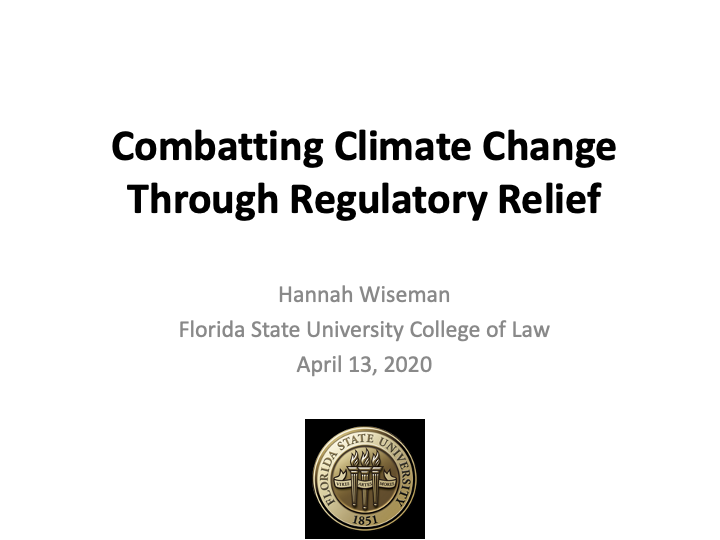
Developing Our Renewable Energy Future
Visiting Scholar Hannah Wiseman discusses streamlining renewable energy development and how to work with local communities to support projects.
As we look to the future, business as usual won’t do when it comes to energy. Climate change is an ever-present threat that looms over our current system. As we battle a warming world, and deal with the persistent issues caused by air pollution, we will need to make the shift from traditional energy sources, like coal and oil, to cleaner sources like renewable energy.
But how can we develop renewable energy while still addressing the social and environmental impacts that may be associated with the proposed projects? This was the topic Visiting Scholar Hannah Wiseman dived into during her Kleinman Center webinar last week. Wiseman is the Attorneys’ Title Professor and Associate Dean for Environmental Programs at the Florida State University College of Law, where she teaches and writes in the areas of energy law, oil and gas law, environmental law, and land use. In this webinar, she joined Cary Coglianese Edward B. Shils Professor of Law and professor of political science at the University of Pennsylvania Carey Law School.
Download Sides:
“People like renewable energy in theory but when it’s in their community they don’t like it so much,” said Wiseman. Local communities often raise concerns about local animal species, noise pollution, eyesores, and other issues to make the point that while renewable projects may be great, they belong somewhere else.
In fact, Wiseman pointed out in her talk that some of the same tactics local environmental groups use to oppose oil and gas projects are often also used for renewable energy projects. One example of this is Cape Wind. Cape Wind was an offshore wind farm proposed off Cape Cod in Massachusetts. Although initially approved, it suffered several legislative and licensing setbacks until the project was finally killed. The local community strongly opposed the project because, although it brought clean energy, it devalued the scenic views from the Cape, disturbed wildlife, and interfered with yachting and other marine activity.
So what can we do to help ensure these critically needed renewable projects are able to be developed without disrupting life for the local communities in which they are located? Wiseman outlined four main areas where we can improve the process:
- Pre-select and pre-permit sites. Determine where renewable projects can go, to ensure community support before a project launches.
- Encourage agency collaboration or consolidation. Eliminate some of the red tape.
- Set time limits for regulatory determinations. Don’t drag the process out unnecessarily.
- Provide applicant support. Task agencies with helping applicants in navigating the regulatory process.
We need renewable energy projects to help power the energy transition needed to fight climate change. But those renewable projects must be built somewhere. For those trying to break ground, these tips can help streamline the process and ensure that long drawn out battles that result in zero energy production, like Cape Wind, are a thing of the past.
Mollie Simon
Senior Communications SpecialistMollie Simon is the senior communications specialist at the Kleinman Center. She manages the center’s social media accounts, drafts newsletters and announcements, writes and publishes content for our website, and regularly posts to our blog.


